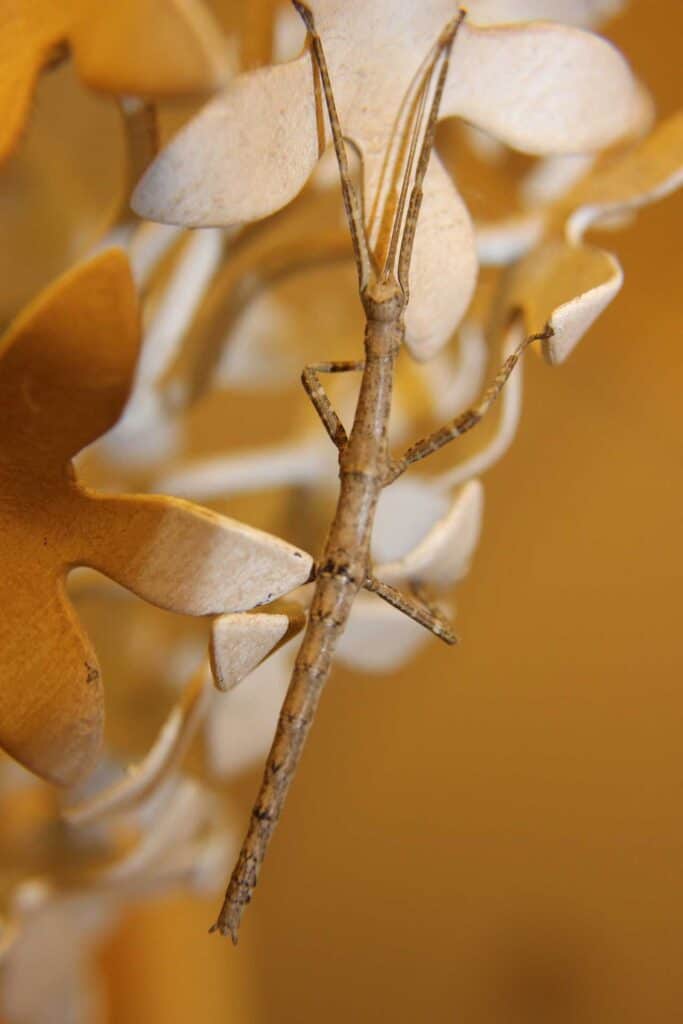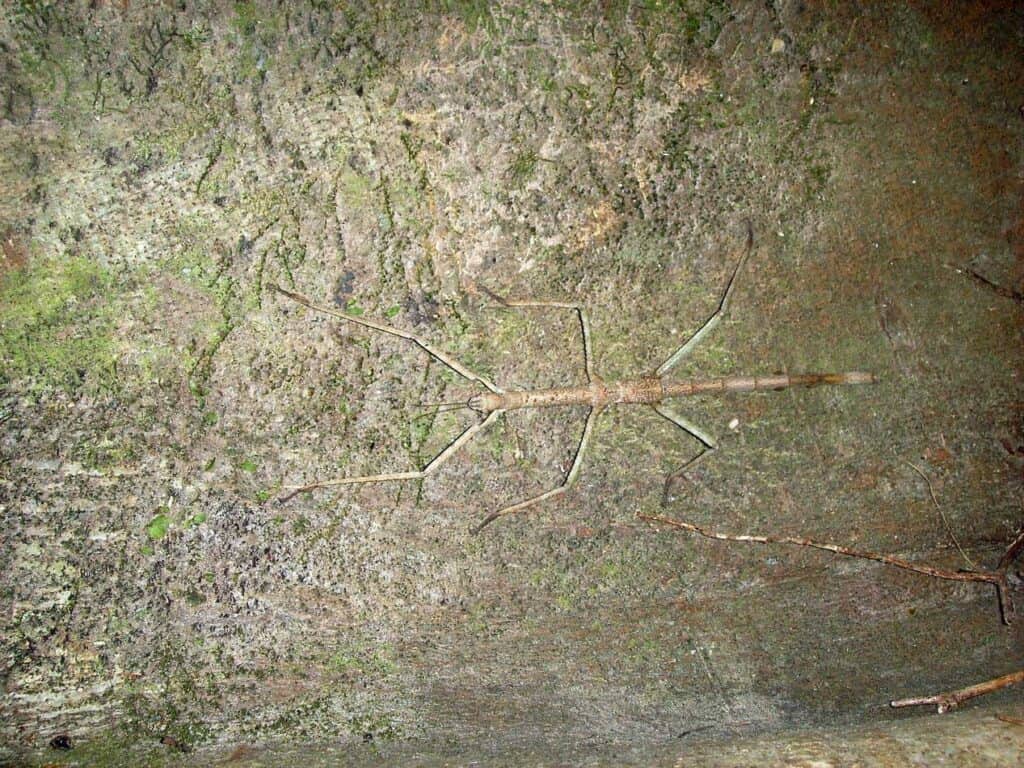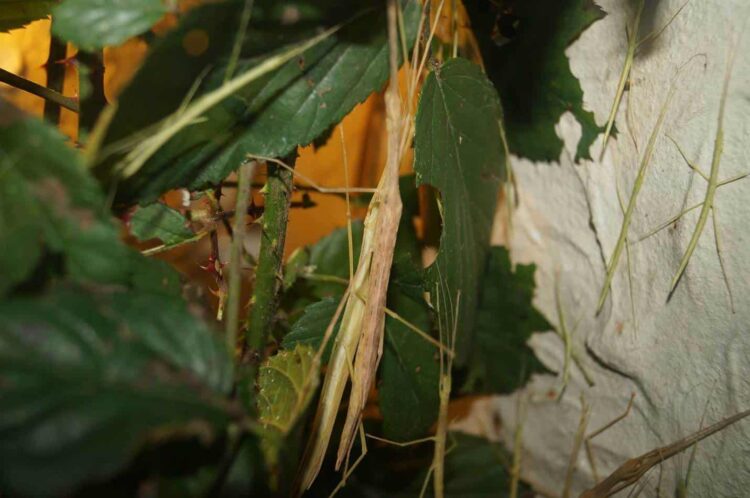Table of Contents
Spotting the signs of an ill or dying stick insect is something that most owners are oblivious to. However, you can generally tell if your stick insect is unwell by the way it is moving about the enclosure. A stick insect that is ill will begin to act differently and may struggle to walk or move about. If you notice that your stick insect has not moved for a while, it could be that it has already died.
Stick insects make wonderful pets, but if you have little-to-no experience or knowledge of these fascinating creatures, how can you tell if your stick insect is ill, or indeed dying? The average lifespan of a stick insect is between a year and a year-and-a-half, but much depends on the actual species. So although there is obviously a good chance that your stick insect may simply live out its life and die of natural causes, there is also the possibility that it could be ill and dying because of this illness.
While certain stick insects are quite hardy and will typically live out their days without any problems, some species, such as the giant Sabah stick insect (Trachyaretaon brueckneri), have a tendency to die quite suddenly, usually without any apparent reason.
For a wealth of advice and information on all things stick insects, check out my ebook by clicking here or on either of the images (all open in a new tab). All your stick insect questions covered for just $2.99 (or the equivalent in your currency)!
or on either of the images (all open in a new tab). All your stick insect questions covered for just $2.99 (or the equivalent in your currency)!
Learn All You Can About Your Stick Insect Species
As all stick insect species are different in terms of the size they grow to and the length of time they are expected to live, it is important to learn as much as you can about the particular species you have. The first thing you need to do is find out what species of stick insect you actually have.
Some people will purchase a stick insect as a pet for a child without knowing anything about it. It is crucial that you know the type of stick insect you have bought so that you can find out more about its particular species.
For example, some stick insects will play dead, particularly if being handled and, as already mentioned, there are those species that die suddenly for no apparent reason. If you know the species of stick insect you have, you can then go and learn what its expected lifespan is. At the end of the day, it may just be the case that your particular stick insect has reached the end of its expected lifespan.
Moreover, if you have familiarized yourself with the movements of your stick, you are more likely to notice when something is not quite right.

How Long Do Stick Insects Live For?
As already mentioned, the average lifespan of a stick insect is just over a year. The majority of species will typically live until around this age.
However, some females of certain species will live almost twice as long as the males from that same species. It is also generally accepted that the larger the species, the longer they will live.
Note: When stick insects become fully-grown adults, they typically only have, on average, about six months left to live. The majority of their lives are actually spent growing to their full, adult size.
So How Do I Know if My Stick Insect is Dying?
I always recommend that you keep at least basic records of when your stick insect was born (if this occurs when you own them; alternatively, try to find out from the person you purchase it/them from) so that you always have a rough idea of how old they are, and, consequently, when they are likely to die.
You can also measure the lifespan of your insect based on the number of moulting stages your stick insect species typically has. It should be noted at this point that throughout most of its life, the stick insect is classed as a subadult.
A stick insect nymph will shed its skin  up to nine times, but there are differences between the types of stick insect species. This is one of the reasons I always advocate researching your species as thoroughly as you can.
up to nine times, but there are differences between the types of stick insect species. This is one of the reasons I always advocate researching your species as thoroughly as you can.
Consequently, possibly the easiest way to determine if your stick insect is dying is to be aware if it’s naturally coming to the end of its lifespan.
What Can Cause a Stick Insect to Die Prematurely?
A fungal infection is the biggest threat to a stick insect when it comes to dying prematurely. And unfortunately, fungal infections are quite common among sticks. It is important then that you ensure your stick insects’ enclosure is free from mould.
It is also a good idea to keep an eye the number of stick insects in your tank. If you have too many confined in one space, there is a higher likelihood of disease spreading. If one stick insect gets sick from a fungal infection, it is more likely that your other sticks will also become ill, particularly if you have too many in a too small space.
Note: Keep a limited number of stick insects inside each tank (depending on the enclosure’s size, of course) and make sure you clean the cage quite often. When misting the leaves within the enclosure (which you must do to keep them fresh), you will also be misting any decaying plant matter within, which means that you are providing the perfect breeding ground for fungal bacteria and mould to grow. Therefore, you need to ensure all leaves are fresh and that you remove any that are not eaten before they reach the decay stage.
But what if you are still noticing fungal infections in the enclosure?
The answer could lie with the stick insects themselves. As you may or may not have found out thus far, stick insects are extremely fragile and regularly lose legs (especially when being handled incorrectly).
(especially when being handled incorrectly).
The remedy to this is to only handle your stick insects when absolutely necessary to limit any potential damage. Moreover, always, always handle your insects gently by gently picking them up by the thorax or coaxing them onto your hand with a leaf.

Beware of the Leaves Supply
You might be asking yourself ‘how do I know if my stick insect is dying’ if there are no signs of fungal infection? Well, you need to consider that it could be the leaves you are supplying.
If you find that your stick insects are not eating their leaves, it is likely that these have been contaminated by outside contaminants.
The most common ones you’re likely to encounter are pesticides and exhaust fumes. Buying leaves from a garden centre or harvesting your own leaves from near a busy road are the two likely culprits.
To figure out whether it’s the food supply, change the type of leaves and where you source them from. If the insects start eating the new leaves and get healthy again, you have found the problem.
Something else that many stick insect owners do not realise is that they could be unwittingly contaminating the air around the enclosure themselves. Spraying chemicals, even something that to you may seem innocuous, such as furniture polish, could in fact poison your sticks. It is important to keep the air chemical-free, and this includes spraying air freshener or fly or wasp spray; all could have a detrimental impact on your stick insect’s lifespan.
Why Your Stick Insects Could be Dying from their Environment
Do your stick insects seem to not live as long as they should? Then it could be due to the environmental conditions they are living in. Each species will have a preferred temperature and climate, but all stick insects appreciate warmth and a little humidity.
Note: Be aware that making the conditions too warm for your particular species will accelerate their life cycle, therefore causing them to develop faster, which will consequently cause them to die sooner.
One essay on the influence of temperature on insect development shows that increasing the temperature of the enclosure will cause the stick insects to go through each moulting stage at a faster rate. So, is the temperature setting of your enclosure appropriate to the species of stick insect you have?
shows that increasing the temperature of the enclosure will cause the stick insects to go through each moulting stage at a faster rate. So, is the temperature setting of your enclosure appropriate to the species of stick insect you have?
Sometimes it’s not just the temperature but the environmental climate. Many stick insects are used to more tropical-type climates, so simply putting the cage on the windowsill so it can face the sun isn’t going to be sufficient.
It is important to mimic the natural climate that your stick insect is accustomed to. To do this, you can use heat bulbs or mats. Amazon sells a great selection of heat bulbs if you’re interested; check some out if you like by clicking here (the link opens in a new tab).
(the link opens in a new tab).
How Should You Treat a Stick Insect with Signs of a Fungal Infection?
In general, the signs of a fungal infection on a stick inset will appear on the body. It is a good idea to inspect your stick insects regularly to look for changes  . If your stick insect has something on its body that you know shouldn’t be there, try to gently wipe it off with a clean finger.
. If your stick insect has something on its body that you know shouldn’t be there, try to gently wipe it off with a clean finger.
Be careful when doing this though because stick insects are, as you well know, extremely delicate. You definitely do not want to break any legs or harm your stick insect in another way.
If a fungal infection is present, your sick stick insect will usually display one of two behavioural changes. You’ll likely notice either lethargy or a lack of appetite. There will be a visible slowdown in its activity as well, making it a little easier to handle it when removing any signs of fungus.
Problems When Shedding Skin
Have you noticed that your stick insect seems to have problems shedding its skin? This is not just a minor problem. Failure to moult properly can lead to death due to an inability to assume the correct molting position, or through a broken leg, which could lead to infection.
There are two reasons why your stick insect may not be shedding correctly.
First, they need room in which to molt; an average three times the length of its body, depending on the species. For example, the Indian stick insect requires a minimum of 6 inches to molt. Your stick insect will typically hang upside down to molt and begin shedding its old skin.
Another reason your stick insect could have trouble molting is if humidity levels are too low. Stick insects need to live in a humid environment or they may not be able to shed their skin.
One solution to this problem is to lightly mist your stick insect when you see that it is trying to moult. Nevertheless, should you notice that your stick insect has had an issue shedding its skin, it would be advisable to take preventative measures so that it does not occur again. Changing the enclosure’s conditions is the best way to do this. As I have mentioned before, consider adding some heat mats or bulbs to better replicate tropical conditions.
Conclusion
It is a good idea to learn all you can about the lifespan of your specific type of stick insect. Knowing how long your stick insect is expected to live will mean that you can be alert to signs that could indicate an illness. If you notice changes to your stick insect’s behaviour towards the end of its expected lifespan, it is a good indication that it may be naturally dying.
But if you notice any significant premature changes to behaviour, your stick insect may be ill. Remember, the average stick insect will still only live for a year or so, with females living slightly longer. Be on the lookout for both fungal infections and issues with molting.
Inspect your stick insects for signs of trouble regularly and don’t be afraid to call in an expert if your stick insect is displaying strange symptoms. And always remember the old adage that says an ounce of prevention is worth a pound of cure.



